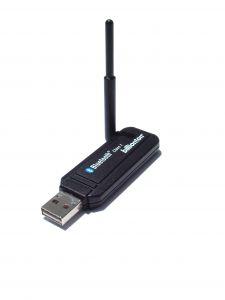
In trying to understand the inner workings of the modern cellular phone, you may find yourself asking, "How does Bluetooth work?" How is it possible that you can so simply "pair" a cell phone headset with your mobile handset? What other applications exist for Bluetooth aside from the typical wireless headset? Read on to find out.
Understanding Bluetooth Technology
It would likely take a significant education in engineering to understand completely the intricacies of Bluetooth technology, but even the average consumer can gain a fundamental understanding of how it works.
In short, Bluetooth technology was created to provide a standard for short-range wireless communication. By creating this industry-accepted standard, a number of different manufacturers can produce similar wireless devices that can be used by the public.
This is because Bluetooth devices are not necessarily sold in pairs. Think about your typical cordless phone as an example. You are given a handset and a base station. It is not possible to take a Motorola cordless phone and use it with a Panasonic base station. In fact, it is oftentimes not possible to use different models within the same company! This is not the case with Bluetooth when implemented correctly. A Nokia Bluetooth headset can be used with a Samsung cell phone.
Not the Same as Wi-Fi Technology
Although the 802.11g Wi-Fi standard and Bluetooth technology operate over the same 2.4GHz frequency, they do not work in the same way. Wi-Fi has greater power consumption, but typically offers higher throughput (faster data speeds) and longer range than Bluetooth. Wireless routers use Wi-Fi.
By contrast, Bluetooth has a much shorter range and does not offer the same level of data transfer. While most Bluetooth devices (Class 2) boast of a 30-foot range, this can only be achieved with near-perfect line of sight and ideal conditions. A robust Wi-Fi connection can reach a much greater distance than this. To its credit, the "synchronization" or "pairing" process for Bluetooth is much simpler than Wi-Fi.
This is why Bluetooth is a common technology used in wireless headsets, wireless computer mice, wireless video game controllers, and other applications that do not require a lot of wireless data. Simplicity and ease of use are emphasized.
Different Bluetooth Standards
Each successive generation has brought about improvements to the wireless technology. Answering the question of how does Bluetooth work is slightly different when considering early Bluetooth technology than when considering more contemporary technology.
Bluetooth 1.0 and 1.0B were the first versions and had several problems, especially with interoperability between manufacturers. This was vastly improved with Bluetooth 1.1 and Bluetooth 1.2. With the latter, faster connections and discovery were offered, as well as higher transmission speeds (up to 721kbps).
The data transfer rate was again improved with Bluetooth 2.0, bumping speeds as high as 2.1Mbps in practice. Although it is sometimes marketed as Bluetooth 2.0+EDR, most Bluetooth 2.0 devices actually include EDR (Enhanced Data Rate). There are some exceptions.
The next iteration of Bluetooth after Bluetooth 2.1 is tentatively called Bluetooth 3.0. It is also codenamed as "Seattle" and will provider some compatibility with ultra-wideband (UWB) radio technology. The main advantage to UWB technology is the increased data speeds, transmitting up to 480 Mbps. Ultra-wideband technology can be used with camcorders, personal media players, and wireless printers.
How Does Bluetooth Work
As mentioned earlier, answering the question of "how does Bluetooth work?" is incredibly complex, as it would be akin to explaining the intricacies of a cellular network. In layman's terms, however, the explanation can be simplified significantly.
Bluetooth technology allows you to use a number of different cell phone accessories without a physical wired connection. A mobile phone can act as a "master" device and then it can be "paired" to a "slave" device, like a wireless headset. The data, like the voice data associated with a phone call, can then be transferred over this wireless connection. Typically, a "passocde" must be entered to confirm the connection.
Under other applications, the "master" device can communicate with up to 7 "slave" devices. However, unlike Wi-Fi, this kind of Bluetooth network does not allow the "master" device to be communicating with all seven "slave" devices at the same time. Instead, the connection switches between the different "slave" devices in quick succession, simulating a simultaneous connection with all the "slave" devices.







